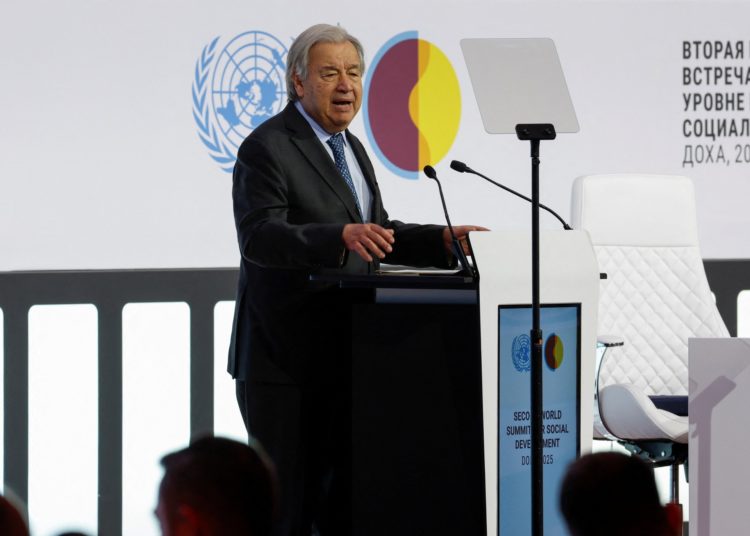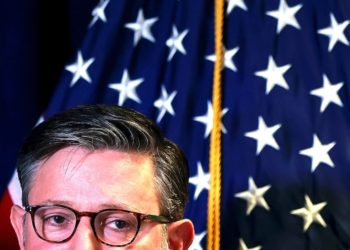President Trump’s sweeping tariffs will be scrutinized by the Supreme Court on Wednesday, placing the president’s most significant economic initiative into the justices’ hands.
The main question looming over the case is whether Trump can use emergency powers to justify his worldwide levies as he seeks to transform global trade — an untested expansion of executive authority.
An appeals court’s 50-year-old decision could come into play regarding Trump’s own statements about his banner policy.
Here are five things to watch for out of the arguments.
The impact of Nixon tariffs
Trump has justified the bulk of his sweeping tariff agenda by pointing to the International Emergency Economic Powers Act (IEEPA), which gives the president power to “regulate” imports in response to certain emergencies.
Small businesses and Democratic-led states will make the case Wednesday that Congress never envisioned “regulate” to include tariffs when it passed IEEPA in 1977.
No president before Trump invoked the law to impose tariffs, so the Supreme Court has never decided that question. The justices’ answer may depend on how they view a 50-year-old appellate decision dating back to former President Nixon.
In August 1971, Nixon imposed a temporary 10 percent tariff by pointing to a near-identical provision in IEEPA’s predecessor, the Trading with the Enemy Act.
“It is an action to make certain that American products will not be at a disadvantage because of unfair exchange rates. When the unfair treatment is ended, the import tax will end as well,” Nixon said in a televised address announcing the surcharge.
An appeals court ultimately upheld Nixon’s action in United States v. Yoshida International Inc.
Expect plenty of mentions of the Yoshida case at Wednesday’s argument.
Solicitor General D. John Sauer, representing the Trump administration, will make the case that Congress was aware of that decision when it reenacted the same language in IEEPA, so it would’ve recognized “regulate” to include tariffs.
The plaintiffs stress the Yoshida decision still rejected unlimited presidential tariff power, contending it can’t justify the breadth of the ones Trump has imposed.
‘Persistent’ problem, an ’emergency’ or both
Even if IEEPA does allow tariffs, the statute only gives Trump authority to impose them to deal with a declared national emergency that poses an “unusual and extraordinary threat.” Trump cites two.
He has pointed to an influx of fentanyl to impose levies on Canada, China and Mexico that date back to February. And beginning with his April “Liberation Day” announcement, Trump has declared an emergency over trade deficits to impose sweeping tariffs on countries across the globe.
The plaintiffs will contend that neither is an emergency.
Some of the challengers’ lawyers believe the trade deficit emergency is on even shakier ground, because Trump’s order stresses that trade deficits have been “persistent” over decades. The word is in the title and nearly a dozen times throughout the order’s text.
The Trump administration will push back that the trade deficits have now reached a tipping point that is destroying the American manufacturing base and making U.S. supply chains vulnerable by forcing more reliance on geopolitical rivals.
But Sauer contends the court doesn’t even need to get into it, because judges have no business second-guessing the president’s emergency findings.
“Such determinations are generally unreviewable because judges lack institutional competence to determine when foreign threats are unusual or extraordinary,” Sauer wrote in court filings.
Major questions doctrine
If the Supreme Court agrees with the plaintiffs that the language around regulations and emergencies plainly doesn’t authorize Trump’s sweeping actions, that’s enough to strike down the tariffs.
If they disagree, the challengers have a plan B.
A legal theory the court often cited when striking down recent Democratic presidents’ unilateral initiatives — including former President Biden’s efforts to cancel student debt and halt evictions during the pandemic and former President Obama’s plan to restrict greenhouse gas emissions — could make Trump’s case harder won.
The “major questions doctrine” holds that regulations of vast economic and political significance need to have clear authorization from Congress.
The small businesses challenging Trump’s global tariffs say the doctrine applies here. So even if Trump’s interpretation of IEEPA is plausible, the businesses told the court it can rule in their favor by finding it doesn’t clear the doctrine’s higher standard.
Lawyers for Learning Resources, an educational toy company, argued in their brief to the justices that IEEPA gives no indication in its language that Congress intended to grant the president “unbounded power” to impose levies.
They emphasize the 1977 law makes no mention of “tariffs,” or other similar terms, such as “duties,” “levies” or “taxes.”
“If there were any doubt, concerns underlying the ‘major questions’ and nondelegation doctrines should eliminate it,” they wrote. “Congress does not (and could not) use such vague terminology to grant the Executive virtually unconstrained taxing power of such staggering economic effect — literally trillions of dollars — shouldered by American businesses and consumers.”
The U.S. Court of Appeals for the Federal Circuit ruled in August that the administration’s view of IEEPA “runs afoul of the major questions doctrine.” Before that, the lower Court of International Trade had ruled that any interpretation of IEEPA delegating unlimited tariff authority is “unconstitutional,” no matter which doctrine the president’s actions are viewed through.
Outside groups’ influence
Outside groups have inundated the justices with friend-of-the-court briefs.
The justices’ questions at oral arguments can sometimes illuminate which ones they deem important.
By their own admission, the justices are sometimes overloaded and don’t read all of them. Justice Amy Coney Barrett in her recent book, “Listening to the Law: Reflections on the Court and Constitution,” wrote that her law clerks flag the helpful ones.
“I routinely read some amicus briefs, like those filed by state governments,” Barrett wrote. “But amicus briefs are not universally useful. Many dwell on policy arguments instead of the law, and while some are well written and well researched, others are not.”
With more than 40 outside briefs submitted in the tariff case, the justices have plenty to choose from. Most support the challengers. The list includes economists like former Federal Reserve Chairs Ben Bernanke and Janet Yellen, other small businesses that have sued Trump, the Chamber of Commerce, libertarian think tanks, former Vice President Mike Pence’s advocacy group and more than 200 members of Congress.
A handful back Trump, including two members of Congress — Reps. Darrell Issa (R-Calif.) and Brian Mast (R-Fla.) — Jay Sekulow’s American Center for Law and Justice and the American First Policy Institute.
No Trump, but will he be a distraction?
Trump and administration lawyers have minced no words in describing the stakes.
They’ve warned a loss could spell economic disaster, and Trump has repeatedly called the case one of the most important in the history of the country.
“If we win, we will be the Richest, Most Secure Country anywhere in the World, BY FAR,” Trump wrote Sunday on Truth Social. “If we lose, our Country could be reduced to almost Third World status.”
In the Oval Office last month, he had even flirted with going to the argument. Trump ultimately opted against it. He’ll be in Miami.
“I do not want to distract from the importance of this Decision,” Trump wrote Sunday.
He would’ve been the first sitting president to attend an oral argument, according to Supreme Court Historical Society resident historian Clare Cushman.
Trump and past presidents have appeared in the nation’s highest courtroom for justices’ investitures and other ceremonies, but not an argument. In June 1969, Nixon heard the justices announce the last three decisions of the term as he sat “quietly” in the back of the courtroom awaiting the swearing-in of his new appointee and to read a tribute to the retiring chief justice, Cushman said.
Even with Trump out of the justices’ sightline, Wednesday’s argument represents a major clash between the administration and the 6-3 conservative-majority court, which includes three of Trump’s own appointees.
The Trump docket has dominated the Supreme Court’s work this year, and the administration has almost always emerged victorious.
But until now, that deluge of disputes has involved the court’s emergency docket.
Wednesday marks the first time the justices will take the bench to consider the merits of a piece of Trump’s second-term agenda.
The post 5 things to watch as Supreme Court considers Trump’s tariffs appeared first on WHNT.




